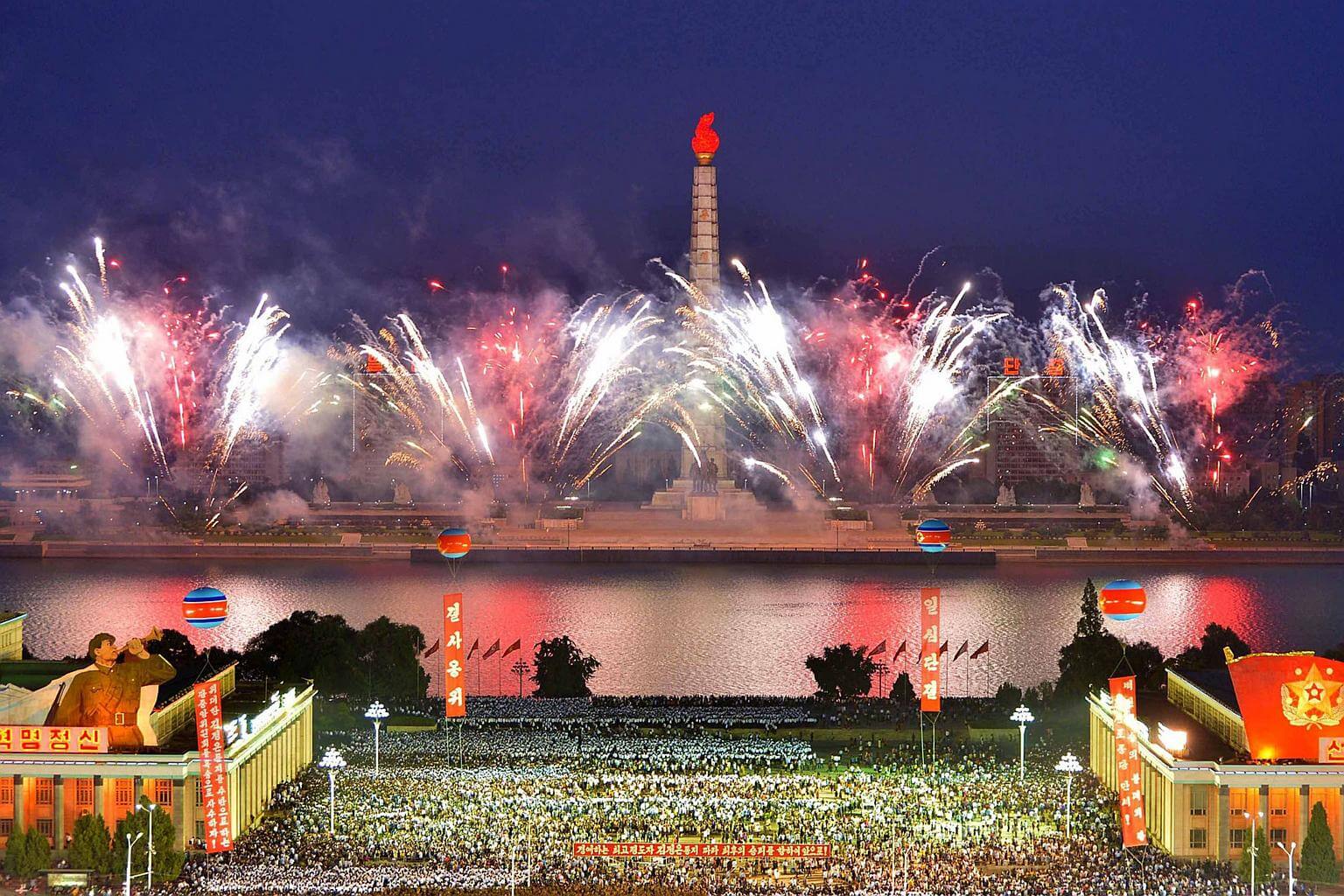North Korea celebrates its largest nuclear test to date with fireworks, mass rally
Sign up now: Get insights on Asia's fast-moving developments

A photo released by North Korea's KCNA agency on Sept 7, 2017, shows fireworks as Pyongyang residents and military personnel celebrate at Kim Ill Sung Square.
PHOTO: AFP
Follow topic:
PYONGYANG (AFP) - North Korea held a mass celebration for the scientists involved in carrying out its largest nuclear blast to date, with fireworks and a mass rally in Pyongyang.
Citizens of the capital lined the streets on Wednesday (Sept 6) to cheer buses carrying the specialists into the city, and tens of thousands of people gathered in Kim Il Sung Square to praise their efforts.
The blast triggered global condemnation and calls by the United States, South Korea, Japan and others for stronger United Nations Security Council sanctions against the North.
The official Korean Central News Agency described it as a "successful ICBM-ready H-bomb test".
Speakers at the rally said the North's military "will put an end to the destiny of the gangster-like US imperialists through the most merciless and strongest preemptive strikes if they and the hordes of traitors finally ignite a war", KCNA reported.
Sunday's blast was the North's sixth nuclear detonation and by far its biggest to date.
Hydrogen bombs, or H-bombs, are thermonuclear weapons far more powerful than ordinary fission-based atomic bombs, and use a nuclear blast to generate the intense temperatures required for fusion to take place.
Foreign governments have yet to confirm whether Sunday's blast was a full two-stage thermonuclear weapon, or an enhanced fission device.
Working out its size depends on factors including the magnitude of the earthquake generated, the depth at which it was buried, and the type of rock surrounding it.
Estimates vary from South Korea's 50 kilotons to Japan's 160. But all of them are far larger than the 15-kiloton US bomb that destroyed Hiroshima in 1945.
North Korea in July carried out its first two successful tests of an intercontinental ballistic missile (ICBM), apparently bringing much of the US mainland into range.
Seoul and Washington early on Thursday deployed four more launchers in the South for the Thaad missile defence system, whose presence has infuriated Beijing.
The move was part of measures to defend the South from the North, Seoul's defence ministry said.

